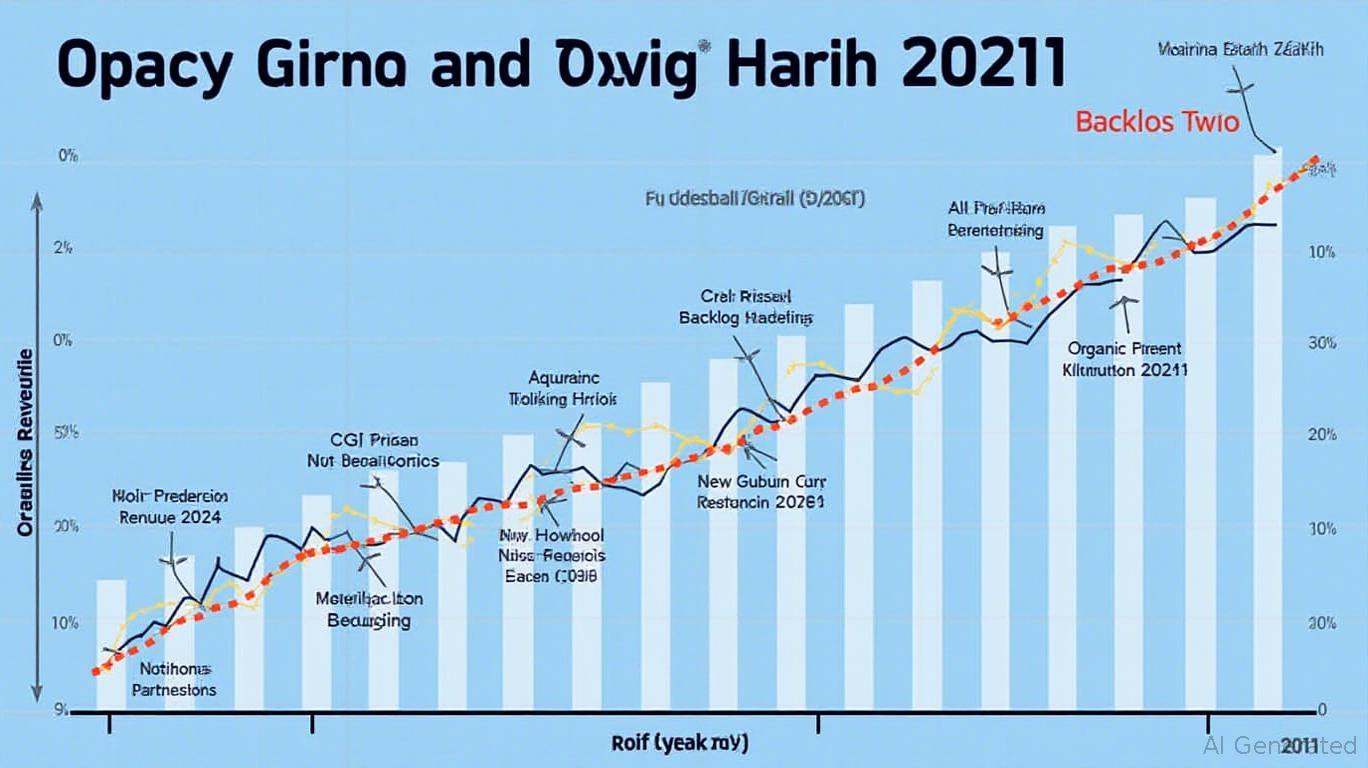CGI Group Navigates Macro Headwinds with Strategic M&A and Share Buybacks
The global economy is navigating choppy
, with inflation, geopolitical tensions, and shifting spending patterns testing corporate resilience. Amid this landscape, Canadian IT and business process services giant CGI Group stands out for its disciplined strategy of combining organic growth with targeted acquisitions and shareholder-friendly capital returns. Let's dissect how CGI is leveraging M&A-driven expansion and share buybacks to offset macroeconomic pressures and position itself for sustained value creation.Organic Growth: A Steady, if Modest, Foundation
CGI's organic revenue growth has slowed in recent years, reflecting broader industry challenges. In fiscal 2024 (ended March 31, 2024), revenue rose 2.7% to $14.68 billion, but this dropped to just 0.9% in constant currency, highlighting headwinds from foreign exchange fluctuations. However, the first quarter of fiscal 2025 (ended December 31, 2024) saw a rebound, with revenue growing 5.1% year-over-year, driven by strong demand in digital transformation and cloud services.
The company's robust financial metrics underscore its operational resilience. Its backlog of $29.76 billion as of Q1-F2025—equivalent to 2.0x annual revenue—suggests ample visibility into future earnings. Meanwhile, adjusted EBIT margins held steady at 16.2%, and cash flow from operations hit a record $646.4 million in Q1-F2025, a testament to efficient capital management.

M&A: The Catalyst for Strategic Growth
CGI's growth is increasingly fueled by its “build and buy” strategy. In fiscal 2024, the company spent $30.0 million on acquisitions in Q1-F2025 alone, with integration costs dropping 72% year-over-year to $10.4 million. These moves aim to bolster its capabilities in high-growth areas like AI-driven digitization, cybersecurity, and sustainability services.
The recent restructuring in Europe—costing $8.3 million in Q1-F2025—is part of a broader effort to optimize operations and reduce redundancies, a move that aligns with its focus on cost discipline. Management has signaled further restructuring costs of $42 million through Q3-F2025, but these investments are likely to pay off in long-term efficiency gains.
Share Buybacks: Returning Capital to Investors
CGI's shareholder returns strategy is equally compelling. In early 2024, it repurchased $250 million worth of shares from founder Serge Godin, reducing his economic stake to 10.5% while retaining voting control. This was funded by its strong cash flow, which hit $629.1 million in fiscal 2024 and $646.4 million in Q1-F2025.
In January 2025, CGI renewed its Normal Course Issuer Bid (NCIB), authorizing the repurchase of up to 20.2 million Class A shares (10% of the public float) over 12 months. Combined with its quarterly dividend of $0.15 per share, this signals a commitment to returning capital to shareholders even as it invests in growth.
Risks and Resilience
No strategy is without risk. CGI faces macroeconomic headwinds, including potential client spending cuts in a slowing economy, as well as integration challenges from M&A. Geopolitical tensions, such as trade barriers or cyber threats, could disrupt its global operations. Additionally, the company's net debt-to-capitalization ratio of 13.7% remains manageable, but rising interest rates could pressure its borrowing costs.
Yet CGI's fortress balance sheet—a $1.57 billion net debt position and $646 million in quarterly cash flow—provides a cushion. Its focus on high-margin, recurring revenue streams (e.g., cloud and cybersecurity services) further insulates it from cyclical downturns.
Investment Takeaways
CGI Group exemplifies how a disciplined blend of organic execution, strategic M&A, and shareholder returns can build resilience in turbulent times. Investors seeking stable, cash-generative firms with exposure to digitization trends should take note:
- Hold or Accumulate: CGI's strong backlog, margin stability, and shareholder-friendly policies make it a defensive play in tech.
Backtest the performance of CGI when 'buy condition' is triggered on quarterly earnings announcement dates, and 'hold for 60 trading days' from 2020 to 2025. Historical backtests reveal that such a strategy underperformed the market, yielding 58.31% versus the benchmark's 108.26%. With a maximum drawdown of -16.48% and a Sharpe ratio of 0.53, the results highlight the importance of a long-term holding strategy rather than short-term event-driven timing. - Monitor M&A Pipeline: Success in integrating acquisitions and realizing synergies will be key to sustaining growth.
- Watch for Macroeconomic Triggers: A pickup in global IT spending or resolution of geopolitical issues could unlock upside.
In an era of economic uncertainty, CGI's focus on execution, reinvestment, and capital returns positions it to thrive—not just survive.
This analysis emphasizes CGI's ability to navigate challenges through a balanced strategy. For investors, the question isn't whether the economy will face headwinds, but whether CGI's playbook can deliver consistent value despite them. The evidence so far suggests it can.

Comments
No comments yet